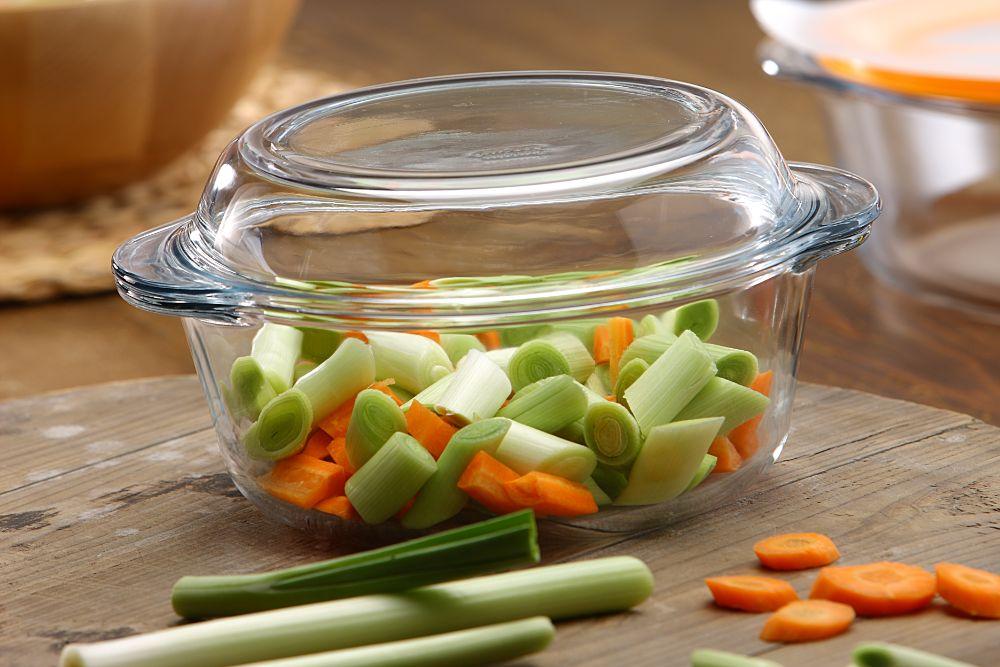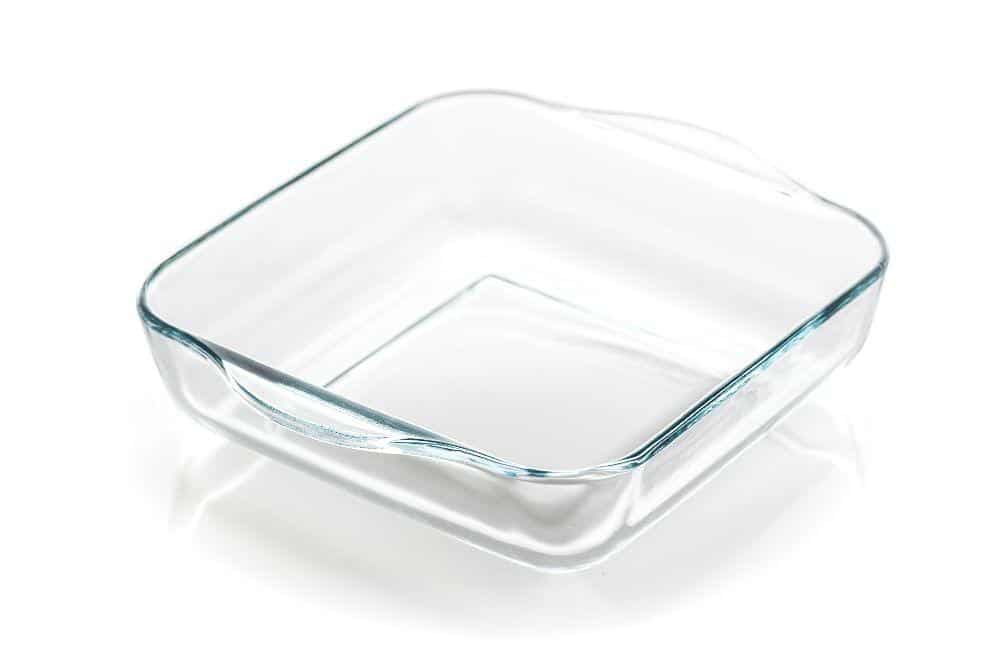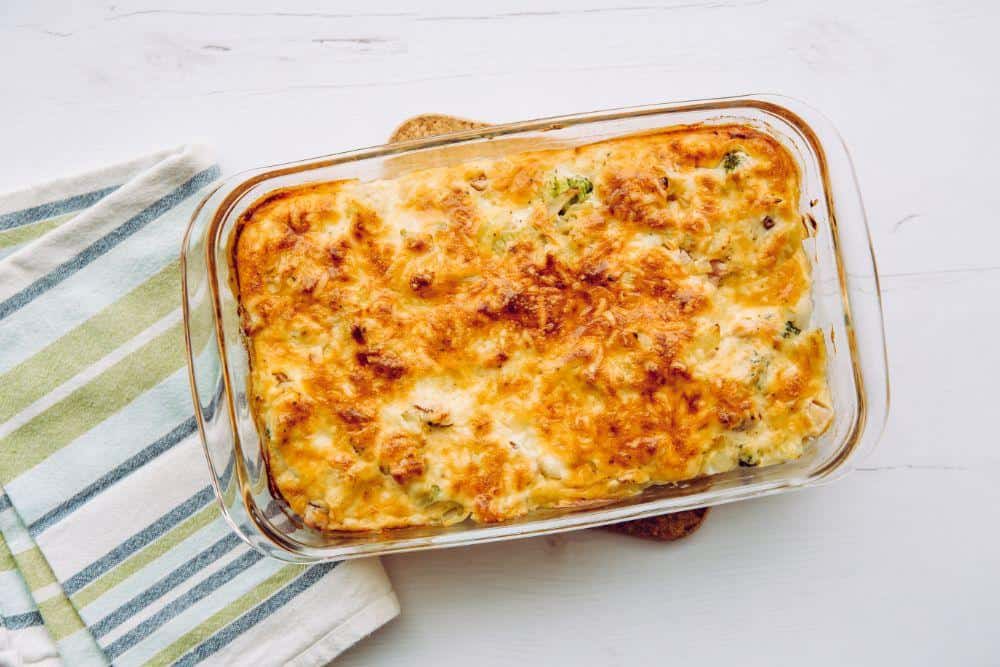Anyone that’s done some cooking around their house knows that kitchen gear comes in all kinds of materials. Wood, plastic, and metal all serve their purpose when making meals for the family. However, glass isn’t as common as it used to be, especially borosilicate glass.
Why isn’t borosilicate glass used as much as other types of glass, let alone other materials? Is it even safe to use in the first place? Let’s look at what goes into making borosilicate glass and why it might be worth looking at some borosilicate glassware for your home.
Borosilicate glass is a type of glass made using boron trioxide. This compound makes up around 10% to 15% of the glass’s total weight. Adding boron trioxide to a conventional glass blend improves the ability of the glass to resist thermal shock.
In thermal shock, an item undergoes rapid changes in its mechanical makeup due to a sudden temperature change. Because hot things expand, sudden heat changes can cause solids to drastically change their shape due to thermal expansion. The higher a material’s coefficient of thermal expansion, the more that solid grows when exposed to a high temperature
Thermal Shock Resistance Demonstrated as Traditional Glass Objects are Exposed to Extreme Temperature Change (don’t try this at home). Unlike more traditional glass, borosilicate glass has a high resistance to thermal shock
Boron trioxide has a very low coefficient of thermal expansion, meaning it doesn’t change its shape much in response to heat. As a result, the material is said to have very high thermal shock resistance. This property gets transferred to the glass when you blend boron trioxide into the silica before blowing the glass.
Thus, borosilicate glass uses boron trioxide to create heat-resistant glassware.
This heat resistance comes into play during the creation of borosilicate glass, too. To create this glass type, you have to use a much higher temperature than you would with regular glass. This increased heat adds the benefit of extra durability for the glass since the fusion of the silica and other materials is tighter than the other glass types.
The obvious example of this property in action is that borosilicate glass doesn’t shatter when dropped on the floor - in sharp contrast to ordinary glass.

Borosilicate Glass is Shatter Resistant
There are plenty of uses for heat-resistant glass, but most folks will use borosilicate glass for their glass cookware at home. Measuring cups, bakeware dishes, and similar kitchen implements made from borosilicate can handle the hot temperatures common when cooking. meaning a home cook doesn’t risk their glassware breaking from thermal shock with borosilicate glass.
Outside the home, borosilicate glass has plenty of uses in industrial and laboratory settings. Most industrial-grade and lab-grade glass use borosilicate glass in glass components that will survive the high temperatures needed in these places for manufacturing and testing.
Finally, borosilicate glass makes for a great container thanks to its durability and non-toxicity. Glass bottles, jugs, and drinking glasses made from borosilicate glass are common, if somewhat expensive, compared to other glass types like tempered glass and even tempered soda-lime glass.
Borosilicate glass and soda-lime glass differ in the components that make up the glass. Soda-lime glass uses much like silicon dioxide and boron trioxide in its creation, leading to glass that isn’t as durable or heat-resistant as borosilicate glass.
Despite this fact, soda-lime glass makes up the vast majority of glass made each year. Why is that?
The reason is that most reasons to use glass don’t call for highly durable or heat-tolerant glass. Soda-lime glass is the main component for many glass products, ranging from car windshields to glass jars for food storage. These applications don’t have the same demands compared to industrial or scientific applications of glassware.
Also, borosilicate glass is harder than soda-lime glass, allowing it to take complex shapes during blowing. This hardness means that borosilicate glass can keep the delicate and intricate shapes needed for scientific glassware. Soda-lime glass, on the other hand, can take simple shapes more readily.
Finally, borosilicate glass costs more to create between the expensive materials and the higher temperature and care needed to manufacture it. Because soda-lime glass has fewer requirements, it’s the default choice for most applications.

Borosilicate Glass Has Different Properties Than Soda-Lime Glass
Hearing about the different chemicals and applications for borosilicate can make it sound like it is not the best choice for home use. However, given the safety info out there, borosilicate glass is a fine choice for home use.
Just like other glass types, borosilicate glass doesn’t have any toxins or leach into the items stored inside the glass. Companies that make borosilicate glass go out of their way to explain that this glass doesn’t have toxins.
This is due to the structure of glass down at the atomic level. Part of the engineering definition for glass includes labeling glass as an amorphous solid. Amorphous solids have no set structure like you’d see in crystals like diamonds. Instead, the elements and compounds that comprise glass fuse together at random points, creating a blob-like lattice of connections.
It turns out this erratic bonding is what makes glass so great as a non-toxic container. With all the components of glass fused in random ways, the stuff in the glass can’t leech out.
This doesn’t prevent chemicals or other industrial treatments used to clean glassware after it’s made from sticking around, though. This fact is why most places recommend that you clean your glassware well before using it the first time.
Borosilicate glass is completely free of bisphenol A (BPA). Glass manufacturers don’t use any plastic when making borosilicate glass, so you won’t see this compound in any of your borosilicate glassware anytime soon.
However, other borosilicate products can have components containing BPA if they are made of plastic. So, while pure borosilicate glass products won’t have BPA, appliances or cookware made using borosilicate glass as part of their construction might have BPA in their plastic parts.
The easiest way to check for BPA is to review the material info for the item. Companies have to list when their items have BPA plastics in them, meaning you can know before buying the item if BPA is present.

Beware of Glass Products that Contain BPA
Pyrex is a trademarked brand of glass bakeware and laboratory glassware introduced by Corning Glass Works in the 1900s. Pyrex glass is a special blend of borosilicate glass that is clear, durable, and resistant to heat and was a major selling point for Pyrex glassware for a long time.
However, Pyrex eventually expanded to include other types of glass items in their products, including soda-lime products. While Pyrex items made of soda-lime glass started to crop up around the 1930s, this introduction ramped up in the 1980s due to claims that soda-lime glass had better durability when dropped and was more eco-friendly and financially safe to manufacture.
The problem with this change was that soda-lime glass doesn’t have the same thermal resistance that borosilicate glass does. This led to some concerns in the previous decade about the safety of Pyrex products after several reports came out about Pyrex items shattering under high heat, something not seen before the change to soda-lime glass.
Because the greatest source of injury from Pyrex items tends to be from folks dropping or hitting the glassware, Pyrex continues to make soda-lime glass for domestic uses to this day.
Like any other tool, benefitting from borosilicate glass containers or cookware depends on what you want out of the item. When it comes to dealing with heat, it’s tough for other types of glass to beat borosilicate glass.
Still, there could be other reasons to use borosilicate glass. Thanks to the glass’s ability to resist chemical corrosion and acid degradation, borosilicate glass works well as a reusable water bottle or storage container for food around the house. Plus, borosilicate glass tends to be microwave-safe and dishwater-safe thanks to its chemical and physical durability.
Making a decorative borosilicate glass straws
For the eco-minded folks, glass containers tend to be better in the long run for the environment than plastic ones. Unlike plastics, there is no worry about plastic pollution with the use of boroscilicate containers and cookware. According to a May, 2022 study about US plastic recycling waste, only 5% of plastic waste (including plastic bottles and plastic containers) actually ends up being recycled.
Finally, many plastic or metal containers leach somewhat into their stored liquid. Anyone who’s gotten a plastic or metallic taste from their water bottle knows that flavor. Since it’s unclear how these materials affect our bodies, concerned folks could switch to glass containers that can’t leech into the stored liquid.
Just remember that borosilicate glass is more expensive than other glass types. While you stand to benefit from using borosilicate, it’s not worth it to break the bank for this glass type for most home uses.
Yes, borosilicate glass is created from the non toxic chemicals born trioxide and silica. There are no real harmful chemicals in the glass. Silica is considered toxic only when it is inhaled, so it isn't a risk when it is incorporated into cookware. Keep in mind that literally everything we come in contact with is comprised of chemicals, the consideration is whether those chemicals are harmful or not.
The two most common types of glass found in a residential US home are soda lime glass and borosilicate glass. Pure borosilicate glass is BPA free and is considered safe. Soda lime glass is also safe and comprises the majority of the glassware found in a typical home.
